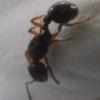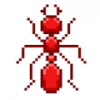- Formiculture.com
- Forums
- Gallery
- Members
- Member Map
- Chat

Substrates and Materials For Building Your Formicarium
Started By
Crystals
, Jan 22 2015 1:36 PM
12 replies to this topic
#1
 Offline
-
Posted January 22 2015 - 1:36 PM
Offline
-
Posted January 22 2015 - 1:36 PM
Substrates and Materials For Building Your Formicarium with Pros and Cons:
Firebrick (K-23 refractory brick, fired clay)
Ytong
Grout
Hydrostone/Gypsum
Plaster of Paris
Acrylic
Gel/Agar
Pumice
Firebrick (K-23 refractory brick, fired clay)
Pros:
Mold resistant
Easily absorbs water
Fairly lightweight depending type of firebrick
Fairly easy to carve with a dremel
Cons:
Can be somewhat difficult to find a local source (usually pottery supply stores). Expensive to ship
Several different types of firebricks made by different manufacturers can affect absorption and carvability
Some ant species can chew through it in time
Ytong
Pros:
Mold resistant
Easily absorbs water
Fairly lightweight
Fairly easy to carve with a dremel
Cons:
Very limited availability in some areas. In some areas like North America, it can be extremely difficult to get ytong. Expensive to ship.
Several different types of firebricks made by different manufacturers can affect absorption and carvability
Some ant species can chew through it in time (less likely than with firebrick)
Grout (unsanded and sanded)
Pros:
Mold Resistant
Absorbs water, but absorbs it fairly slowly. Although it holds the moisture for a long time.
Fairly heavy when compared to hydrostone
Easy to pour into any mold
Easily obtained at any stores that sells floor tiles.
Cons:
Must be mixed with additives like perlite and/or sand.
The exact mix affects weight, strength, and water absorption.
When fully cured it is hard to carve with a dremel
If it is less than 3/4 inch thick, it can crack easily
Unsanded grout and sanded grout behave slightly differently. Pure Unsanded grout absorbs water slowly, Pure Sanded grout does not like to absorb water at all. Some other slight differences as well.
Hydrostone/Gypsum
Pros:
Mold Resistant
Very good water absorption and distribution
Fairly lightweight
When cured it is fairly hard
Easy to mix and pour into any mold
Cons:
Limited availability - can be hard to find in stores, and shipping it can be expensive
Sweat - Hydrostone residue appears on the outside formicarium walls as it absorbs water. This does not affect keeping ants, it just looks ugly. The residue can be wiped off when wet or dry, and the residue slowly stops occurring after 3 months. If the water source is below the nest, it may cause holes to form.
Can discolor the hydrostone if some food left in nest gets moldy.
Once fully cured, it is hard to carve with a dremel.
Plaster of Paris
Pros:
Easily available and can be found at any craft store
Good water absorption
Easy to mix and pour
Somewhat hard when cured, somewhat easy to carve especially if damp.
Cons:
Highly prone to mold
Plaster rubs off easily if it rubs against anything
Wet plaster gets very soft
Acrylic
Pros
Mold resistant
Water absorption/humidity depends on nest setup, it can vary from needing water 2x/day to twice a month
Fairly cheap to make or easy to build. Easy to buy, with many designs available online.
Good visibility
Cons
Unless the floor has a substrate, species with formic acid may have problems if they deposit small drops of formic acid on the floor and stumble into them shortly afterwards.
Some species have difficulty walking/climbing on smooth acrylic
Air flow (and humidity) may vary with different designs
Soil filled nest (narrow vertical, narrow horizontal, or box shaped)
Pros
Most natural method
Get to view digging ability and ants choose tunnel sizes and shapes
Easily watered
Plants can be grown in box shaped soil nest
Cons
*There are many types of soil, and each behaves differently.
Vertical and box shaped soil filled nests can be prone to tunnel collapses. Horizontal nests with 4-8mm of height remove the potential for tunnel collapses.
Visibility isses with dirt smears on glass and ants placing soil against glass to block light.
Mold problems can occur
Difficult to convince colony to move
Gel/Agar
Gel nests seen online are not designed for a long term colony. They have nutrients in the agar solution which causes various problems. Please do not use that type of gel.
Agar (100% agar gelatin used for Cooking)
Pros
Can see the ants dig
Can be used in test tubes for queens that do not do well in ordinary test tubes
Cons
Can be difficult to re-hydrate
Difficult to convince colony to relocate
Pumice
Pros:
Mold resistant
Easily absorbs water
Fairly lightweight depending type of pumice
Easy to carve with a dremel
Cons:
There can be lots of variation from one pumice stone to another. Each stone may behave a bit differently in regards to carveability, water absorption, and strength.
Can be somewhat difficult to find a local source depending on your location (some pet stores carry it). Expensive to ship
Some ant species can chew through it in time
Keep in mind:
If ants drag food into the nest, the food may mold, even if the nest material may not.
Products under different brands, and in different locations, may be slightly different.
Different ways of setting up the nest can affect how often the nest needs to be watered, as well as ventilation, and other things.
Materials and Equipment Purchasing Guide:
- AntsMAN, sgheaton, brian and 4 others like this
"Always do right. This will gratify some people, and astound the rest." -- Samuel Clemens
#2
 Offline
-
Posted January 22 2015 - 1:38 PM
Offline
-
Posted January 22 2015 - 1:38 PM
Links to Tutorials on How to Build Formicariums:
How to Build a Formicarium out of Grout
http://forum.formicu...icture +journey
How to Build a Picture Frame Grout Formicarium with Advanced Hydration
http://www.formicult...ion/#entry28868
How to Build a Formicarium out of Firebrick (Ytong will be similar)
http://forum.formicu...icture +journey
How to build a Formicarium out of a Bead Container
http://forum.formicu...icture +journey
How to build a horizontal sand formicarium
http://www.formicult...nd-formicarium/
Other tutorials can be found on List of Handy Links (Pinned in the General Section) http://www.formicult...of-handy-links/
Anyone feel like making a nice hydrostone or acrylic tutorial? ![]()
"Always do right. This will gratify some people, and astound the rest." -- Samuel Clemens
#3
 Offline
-
Posted January 23 2015 - 11:07 AM
Offline
-
Posted January 23 2015 - 11:07 AM
Really nice and informative thread! Awesome! ![]()
#4
 Offline
-
Posted January 23 2015 - 5:08 PM
Offline
-
Posted January 23 2015 - 5:08 PM
Anyone feel like making a nice hydrostone or acrylic tutorial?
Probably won't be me haha. I'm getting a little fed up with both of those things.
#5
 Offline
-
Posted February 27 2015 - 8:50 AM
Offline
-
Posted February 27 2015 - 8:50 AM
Looks Like you can also buy Pumice cement. "Pumice is widely used to make lightweight concrete or insulative low-density cinder blocks. When used as an additive for cement, a fine-grained version of pumice called pozzolan is mixed with lime to form a light-weight, smooth, plaster-like concrete."
I don't recall seeing it in my location, but I have never really looked. Not sure if ants would thrive in a nest made of this or not.
"Always do right. This will gratify some people, and astound the rest." -- Samuel Clemens
#6
 Offline
-
Posted October 28 2016 - 2:34 PM
Offline
-
Posted October 28 2016 - 2:34 PM
Substrates and Materials For Building Your Formicarium with Pros and Cons:Firebrick (K-23 refractory brick, fired clay)YtongGroutHydrostone/GypsumPlaster of ParisAcrylicGel/AgarPumiceFirebrick (K-23 refractory brick, fired clay)Pros:Mold resistantEasily absorbs waterFairly lightweight depending type of firebrickFairly easy to carve with a dremelCons:Can be somewhat difficult to find a local source (usually pottery supply stores). Expensive to shipSeveral different types of firebricks made by different manufacturers can affect absorption and carvabilitySome ant species can chew through it in timeYtongPros:Mold resistantEasily absorbs waterFairly lightweightFairly easy to carve with a dremelCons:Very limited availability in some areas. In some areas like North America, it can be extremely difficult to get ytong. Expensive to ship.Several different types of firebricks made by different manufacturers can affect absorption and carvabilitySome ant species can chew through it in time (less likely than with firebrick)Grout (unsanded and sanded)Pros:Mold ResistantAbsorbs water, but absorbs it fairly slowly. Although it holds the moisture for a long time.Fairly heavy when compared to hydrostoneEasy to pour into any moldEasily obtained at any stores that sells floor tiles.Cons:Must be mixed with additives like perlite and/or sand.The exact mix affects weight, strength, and water absorption.When fully cured it is hard to carve with a dremelIf it is less than 3/4 inch thick, it can crack easilyUnsanded grout and sanded grout behave slightly differently. Pure Unsanded grout absorbs water slowly, Pure Sanded grout does not like to absorb water at all. Some other slight differences as well.Hydrostone/GypsumPros:Mold ResistantVery good water absorption and distributionFairly lightweightWhen cured it is fairly hardEasy to mix and pour into any moldCons:Limited availability - can be hard to find in stores, and shipping it can be expensiveSweat - Hydrostone residue appears on the outside formicarium walls as it absorbs water. This does not affect keeping ants, it just looks ugly. The residue can be wiped off when wet or dry, and the residue slowly stops occurring after 3 months. If the water source is below the nest, it may cause holes to form.Can discolor the hydrostone if some food left in nest gets moldy.Once fully cured, it is hard to carve with a dremel.Plaster of ParisPros:Easily available and can be found at any craft storeGood water absorptionEasy to mix and pourSomewhat hard when cured, somewhat easy to carve especially if damp.Cons:Highly prone to moldPlaster rubs off easily if it rubs against anythingWet plaster gets very softAcrylicProsMold resistantWater absorption/humidity depends on nest setup, it can vary from needing water 2x/day to twice a monthFairly cheap to make or easy to build. Easy to buy, with many designs available online.Good visibilityConsUnless the floor has a substrate, species with formic acid may have problems if they deposit small drops of formic acid on the floor and stumble into them shortly afterwards.Some species have difficulty walking/climbing on smooth acrylicAir flow (and humidity) may vary with different designsSoil filled nest (narrow vertical, narrow horizontal, or box shaped)ProsMost natural methodGet to view digging ability and ants choose tunnel sizes and shapesEasily wateredPlants can be grown in box shaped soil nestCons*There are many types of soil, and each behaves differently.Vertical and box shaped soil filled nests can be prone to tunnel collapses. Horizontal nests with 4-8mm of height remove the potential for tunnel collapses.Visibility isses with dirt smears on glass and ants placing soil against glass to block light.Mold problems can occurDifficult to convince colony to moveGel/AgarGel nests seen online are not designed for a long term colony. They have nutrients in the agar solution which causes various problems. Please do not use that type of gel.Agar (100% agar gelatin used for Cooking)ProsCan see the ants digCan be used in test tubes for queens that do not do well in ordinary test tubesConsCan be difficult to re-hydrateDifficult to convince colony to relocatePumicePros:Mold resistantEasily absorbs waterFairly lightweight depending type of pumiceEasy to carve with a dremelCons:There can be lots of variation from one pumice stone to another. Each stone may behave a bit differently in regards to carveability, water absorption, and strength.Can be somewhat difficult to find a local source depending on your location (some pet stores carry it). Expensive to shipSome ant species can chew through it in timeKeep in mind:If ants drag food into the nest, the food may mold, even if the nest material may not.Products under different brands, and in different locations, may be slightly different.Different ways of setting up the nest can affect how often the nest needs to be watered, as well as ventilation, and other things.
Materials and Equipment Purchasing Guide:
What about using Cement? what are the pro's and con's of it? thanks
#7
 Offline
-
Posted October 29 2016 - 9:01 AM
Offline
-
Posted October 29 2016 - 9:01 AM
I'm curious as too the use of agar. does 100% agar used for cooking have mold-proof properties and is it equipped to hold colonies long term? and how would you go about hydrating it? In order to prevent myself from looking like an idiot, I know that "gel ant farms" are very hazardous for raising ant colonies. I am under the suspicion that this is a different material.
#8
 Offline
-
Posted October 29 2016 - 10:01 AM
Offline
-
Posted October 29 2016 - 10:01 AM
The gel ant farms contain sugar.
#9
 Offline
-
Posted October 29 2016 - 10:08 AM
Offline
-
Posted October 29 2016 - 10:08 AM
The gel ant farms contain sugar.
I am aware, If you re-read what I have written, you will see that I am talking about a different material.
#10
 Offline
-
Posted October 29 2016 - 1:37 PM
Offline
-
Posted October 29 2016 - 1:37 PM
Hi,
I"ve watched all your vids on youtube. They inspired me to purchase a bunch of formicarium building supplies before I even had a test tube of ants. I ended up getting Hydrostone.
Thanks,
Jess
#11
 Offline
-
Posted April 25 2017 - 5:54 AM
Offline
-
Posted April 25 2017 - 5:54 AM
I am having a problem with my hydrostone molding. This is happening even in containers that I have prepared but never put ants in, so I know it is not because of food residue. Is this normal? I thought hydrostone is supposed to e fairly mold resisitant.
I have wiped the mold off, but it looks like it is down inside of the hydrostone and has stained it. Does anyone know how to prevent this, and how to get rid of the mold safely if it does occur?
Thank you!
#12
 Offline
-
Posted August 12 2019 - 11:35 AM
Offline
-
Posted August 12 2019 - 11:35 AM
Where are you guys in the US (particularly the west coast) buying refractory brick?
#13
 Offline
-
Posted August 13 2019 - 5:10 AM
Offline
-
Posted August 13 2019 - 5:10 AM
Maybe it didn’t cure for long enough?I am having a problem with my hydrostone molding. This is happening even in containers that I have prepared but never put ants in, so I know it is not because of food residue. Is this normal? I thought hydrostone is supposed to e fairly mold resisitant.
I have wiped the mold off, but it looks like it is down inside of the hydrostone and has stained it. Does anyone know how to prevent this, and how to get rid of the mold safely if it does occur?
Thank you!
1 user(s) are reading this topic
0 members, 1 guests, 0 anonymous users






















